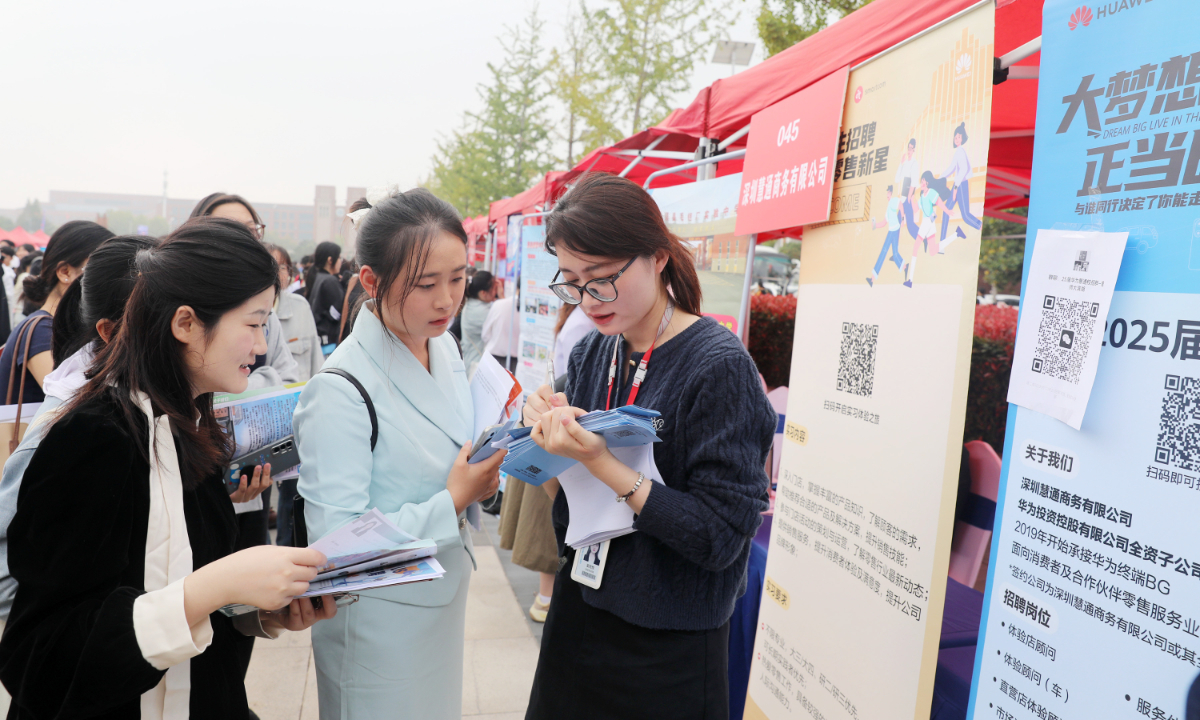
College students look for jobs at an employment fair held on the campus of the Huaibei Normal University in Huaibei, East China's Anhui Province on October 16, 2024. The job fair attracted more than 183 companies offering more than 10,000 positions. The year 2024 is expected to see 11.79 million students graduating from colleges, an increase of 210,000 from 2023. Photo: VCG
China's unemployment rate for the urban labor force aged 16 to 24, excluding students, fell to 17.6 percent in September from 18.8 percent in August, data from the National Bureau of Statistics (NBS) showed on Tuesday.
The decline reflected the ongoing efforts to stabilize employment, particularly the employment of college graduates.
The unemployment rate for the labor force aged 25 to 29, excluding students, dropped to 6.7 percent in September from 6.9 percent in August. The unemployment rate for the labor force aged 30 to 59, excluding students, was 3.9 percent in September, remaining unchanged from the previous month.
The drop in the youth unemployment rate was mainly due to more graduates from the class of 2024 began seeking jobs, said Wang Pingping, a statistician at the NBS.
By September, as more graduates landed jobs, the unemployment rate for young people aged 16 to 24 and 25 to 29, excluding students, decreased significantly, Wang said.
As more graduates find jobs and start working, the overall employment situation for college graduates is expected to improve in the coming months, Wang added.
China's job market remained generally stable in the first three quarters of 2024. The surveyed urban unemployment rate averaged 5.1 percent in the first three quarters, down 0.2 percentage points from the same period last year, the NBS data showed.
In September, the surveyed urban unemployment rate in the country stood at 5.1 percent, down 0.2 percentage points from the previous month. This year, Chinese authorities have stepped up efforts to stabilize employment, particularly that of college graduates, Sheng Laiyun, a deputy head of the NBS, told a press conference on Friday.
While overall employment faces certain pressure, the job market remains stable, Sheng noted, citing continued economic growth, the expanding services sector and demographic changes as contributing factors.
In September, China issued guidelines to promote high-quality, sufficient employment. According to the guidelines, efforts would be made to create more high-quality jobs, including transforming and upgrading traditional industries, fostering and strengthening emerging industries, developing industries of the future and accelerating the development of advanced manufacturing clusters.
Global Times




